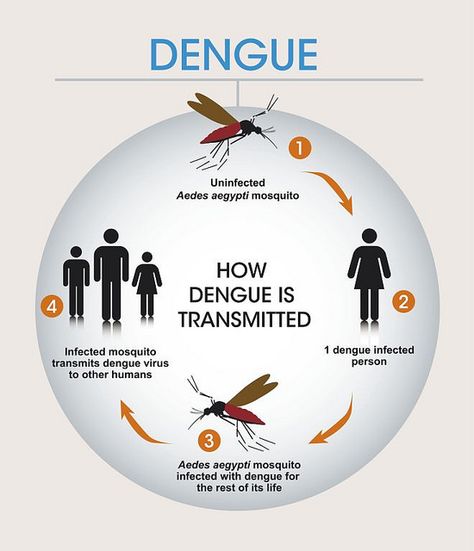Dengue fever is a tropical disease that is borne by mosquitoes. It is caused by the dengue virus. Dengue virus (DEN) is a small single-stranded RNA virus comprising four distinct serotypes. The symptoms of the disease will begin anywhere between three and fourteen days after the initial infection. Dengue fever is an important topic for IAS Exam which is featured in UPSC Mains General Studies – III paper.
Dengue Latest Updates – DNA Vaccine for dengue developed
India’s first and only DNA Vaccine candidate for dengue has shown promising results in its preliminary trials. This vaccine is being developed by the National Centre for Biological Sciences, Bangalore. Know more here.
This article is a part of the Science & Technology segment of the UPSC Syllabus.
The candidates can read more about Science & Technology topics from the links provided below:
| Difference Between Dengue and Malaria | Pradhan Mantri Matritva Vandana Yojana |
| Bio-fortification | Zoonotic Diseases |
| Nipah Virus | Chapare Virus |
Introduction
- Dengue is the most rapidly spreading mosquito-borne viral disease in the world.
- According to the data of the World Health Organisation (WHO), an estimated 50 million dengue infections occur annually and approximately 2.5 billion people live in dengue-endemic countries.
- Dengue inflicts significant health, economic and social burden on the populations of endemic areas.
- Dengue afflicts all levels of society, but the burden may be higher among the poorest who grow up in communities with an inadequate water supply and solid waste infrastructure, and where conditions are most favourable for multiplication of the main vector, Aedes aegypti.
What are the Symptoms of Dengue Fever?
The symptoms include:
- High fever
- Headache
- Vomiting
- Muscle and joint pains
- Skin Rash
It takes about two to seven days to fully recover. In extreme cases, the disease can develop into severe dengue, known as dengue hemorrhagic fever that causes bleeding, low levels of blood platelets, and blood plasma leakage.
| Know the ways and means of cracking one of the toughest exams in the country by getting tips from the IAS Toppers themselves!!
To complement your preparation for the upcoming exam, check the following links: |
Dengue – UPSC Notes:- Download PDF Here
What Causes Dengue Fever?
- Dengue is spread by several species of female mosquitoes of the Aedes variety, specifically of the Aedes aegypti.
- The ideal conditions for this species of mosquitos are usually between the latitudes of 35° North and 35° South with an elevation of 1000 meters (3300 ft). They usually bite during the early morning and in the evening, though it does not mean that they will specifically bite at these hours.
- Even though humans are the primary host of the virus, non-human primates are also carriers.
- A single bite is more than enough to be a cause for infection.
- A female mosquito that bites a person infected person with dengue becomes infected during the initial 2-10 day febrile period.
- After 8 – 10 days, the virus spreads to other tissues including the mosquitoes salivary glands, and is subsequently released into its saliva. As per the research conducted on this species, the mosquito remains infected.
To know more about Viruses and their types, visit the linked article
The image below explains the life-cycle of dengue fever:

What can be done to prevent the spread of Dengue Fever?
The spread of Dengue fever is largely dependent on the control of and protection from the bites of the mosquito that transmits it. The following five elements are the recommendation for an Integrated Vector Control by the World Health Organisation:
- Advocacy, social mobilization, and legislation to ensure that public health bodies and communities are strengthened
- Collaboration between the health and other sectors (public and private);
- An integrated approach to disease control to maximize the use of resources;
- Evidence-based decision-making to ensure any interventions are targeted appropriately; and
- Capacity-building to ensure an adequate response to the local situation.
- The main method of controlling the breeding of Aedes aegypti is by destroying its habitats and breeding grounds the primary method of controlling Aedes aegypti is by eliminating its habitats. This involves eliminating open sources of water. This is done by getting rid of open sources of water, or by adding insecticides or biological control agents to these areas.
- The removal of open collection of water is far more effective and optimal removal of control as the application of insecticides may have adverse negative health effects on the local population, due to the risk they pose in contaminating local food sources.
- People can prevent mosquito bites by wearing clothing that fully covers the skin, using mosquito netting while resting, and/or the application of insect repellent (DEET being the most effective).
- While these measures can be an effective means of reducing an individual’s risk of exposure, they do little in terms of mitigating the frequency of outbreaks, which appear to be on the rise in some areas, probably due to urbanization increasing the habitat of Aedes aegypti.
Frequently Asked Questions Related to Dengue
How Dengue is caused?
How many days does it take to recover from dengue?
What are the warning signs of dengue?
Warning Signs of dengue are as follows:
- Abdominal pain or tenderness.
- Persistent vomiting.
- Clinical fluid accumulation.
- Mucosal bleed.
- Lethargy or restlessness.
- Liver enlargement > 2 cm.
- A laboratory finding of increasing HCT concurrent with a rapid decrease in platelet count.
Other relevant links:
Comments